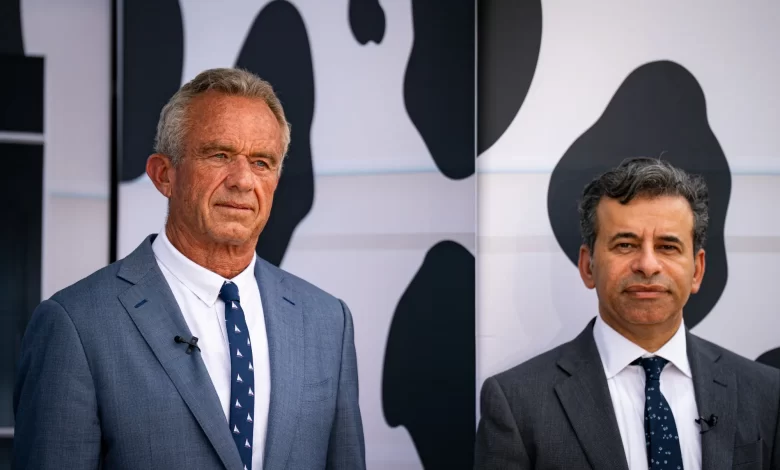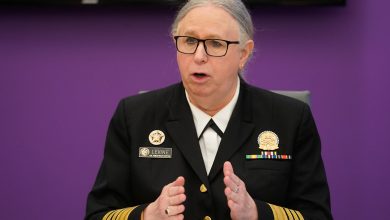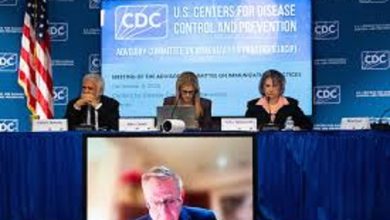Who is George Francis Tidmarsh? The Untold Story Behind the Name

Who is George Francis Tidmarsh?
George Francis Tidmarsh is making headlines today—named on July 21, 2025 as the new Director of the FDA’s Center for Drug Evaluation and Research (CDER). This appointment crowns a multifaceted career spanning academia, biotechnology entrepreneurship, and pediatric medicine. To appreciate the full magnitude of his rise, we’ll explore the lesser-known paths that shaped him: his early life and education, medical and academic journey, serial biotech founder, and now influential federal regulator.
1. Early Life & Stanford Roots
Born and educated at Stanford University, George Francis Tidmarsh, M.D., Ph.D., earned dual degrees—an M.D. in Pediatrics and a Ph.D. in Cancer Biology, launching a career grounded in rigorous science and clinical compassion.
His academic path included:
- Pediatric residency
- Subspecialties in Pediatric Oncology and Neonatology
- Continuing to serve as clinical faculty at Stanford before pivoting full-time into biotech research.
During this period, he co-founded and co-directed Stanford’s Master of Translational Research and Applied Medicine (M-TRAM) program—designed to bridge scientific breakthroughs and clinical application, shaping future physician‑scientists.
2. From Bench to Boardroom
A. Serial Entrepreneur
George Francis Tidmarsh stands out as a serial biotech entrepreneur:
- Threshold Pharmaceuticals – Founder (successful exploration and initial funding).
- Horizon Pharma – Founded in 2005; under his leadership, it developed Duexis (for rheumatoid arthritis), culminating in its $28 billion acquisition by Amgen in 2022.
- La Jolla Pharmaceutical Company – President & CEO (2012–2019), guiding the development of angiotensin II for shock and artesunate for severe malaria; La Jolla’s products earned FDA/EMA approvals.
- Executive positions at Sequus Pharmaceuticals (developer of Doxil) and Coulter Pharmaceuticals (developer of BEXXAR), both later acquired by major industry players.
- Chairman of Revelation Biosciences, focusing on kidney-disease therapies, until stepping down in May 2025.
Across these ventures, his leadership catalyzed clinical development of 6–7 FDA-approved drugs. His track record reflects a rare combination of scientific depth and executive scaling—a blueprint for drug innovation.
B. Scientific Rigor & Publication
Over 30 years, George Francis Tidmarsh authored 143 scientific publications and patents, underscoring his contributions to oncology, critical care, and translational medicine.
He has also been a vocal advocate for scientific integrity, funding programs to explore academic fraud. His FDA expert‑panel advocacy—such as calling for the removal of talc from consumer products—demonstrates his readiness to challenge conventional stances in favor of public safety.
3. From Industry Leader to FDA Chief
A. Heading the Nation’s Drug Watchdog
July 21, 2025 marks the pivotal date when George Francis Tidmarsh was appointed CDER Director by FDA Commissioner Marty Makary. The CDER regulates prescription and over-the-counter drugs, biologics, and generics—overseen by nearly 6,000 staff.
Despite his lack of direct federal regulatory experience, his appointments to FDA expert panels and consistent scientific engagement make him no stranger to governmental scrutiny.
B. Filling a Leadership Void
The FDA’s drug center has experienced significant leadership churn:
- Patrizia Cavazzoni resigned January 2025.
- Jacqueline Corrigan-Curay stepped in as acting director before retiring in July.
By contrast, Tidmarsh brings steadier continuity from industry, offering a fresh perspective focused on innovation and integrity.
C. Agenda & Priorities
Early glimpses of his CDER agenda:
- Enhancing drug-review efficiency with pragmatic industry-informed reforms.
- Reassessing long-standing drug safety—as demonstrated in his talc advocacy.
- Addressing scientific misconduct by enforcing publication accountability and data integrity.
Observers anticipate he will champion cross-agency initiatives to align innovation with public health benefit.
4. Personal Ethos & Legacy
A. The Physician‑Scientist
George Francis Tidmarsh exemplifies the model of a physician-scientist, blending clinical insight with therapeutic innovation. His sustained affiliation with Stanford—training fellows, advising medical boards, and founding M‑TRAM—underscores his lasting impact on academic medicine.
B. Mentorship & Public Health
His work demonstrates a deep investment in shaping future leaders who can translate lab discoveries into real-world treatments—his enduring legacy in medicine.
5. Untold Aspects & Public Relevance
While his biotech successes are often spotlighted, lesser-known elements include:
- Hands-on hospital care in pediatrics, oncology, and neonatology—reflecting a career built on both lab and bedside practice.
- Founding educational infrastructure—such as M-TRAM—to embed translational thinking into medical training.
- Advocacy roles on key safety debates, including consumer products like talc, showing his willingness to cross from pharma success to public health risk mitigation.
Conclusion: The Name Behind the Title
From Stanford scholar to biotech trailblazer, George Francis Tidmarsh’s ascent to CDER Director is the culmination of decades-long leadership. He stands out for effectively bridging clinical care, scientific rigor, entrepreneurial success—and now, regulatory stewardship. His journey highlights how a single individual can shape the arc of drug development, policy, and public health.
With a portfolio of seven FDA-approved drugs, deep academic contributions, and a directorial role at America’s premier drug agency, George Francis Tidmarsh is poised to leave a lasting mark on how tomorrow’s medicines are discovered, evaluated, and deployed.
FAQ
Q: How many FDA-approved drugs has he been involved with?
A: Between 6 to 7, including Duexis, BEXXAR, Doxil, angiotensin II for shock, and artesunate for malaria.
Q: What’s the significance of his Stanford role?
A: As co-founder of M-TRAM and senior faculty, Tidmarsh has shaped translational research education and mentored future physician-scientists.
Q: What challenges await at CDER?
A: He enters amid leadership turnover, staff cuts, and scrutiny over FDA reviews and safety. His industry background may help rebuild confidence and regulation efficiency




